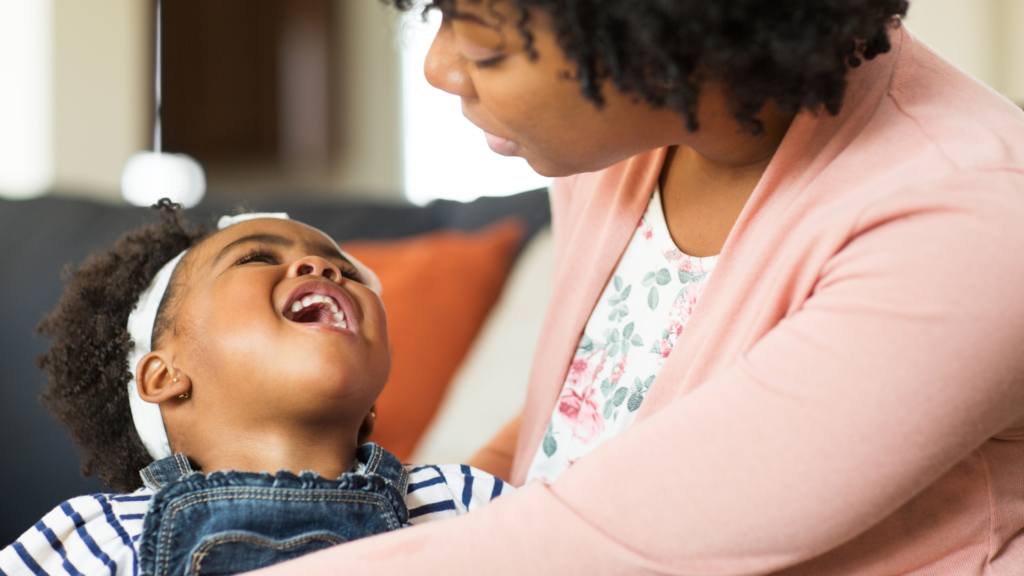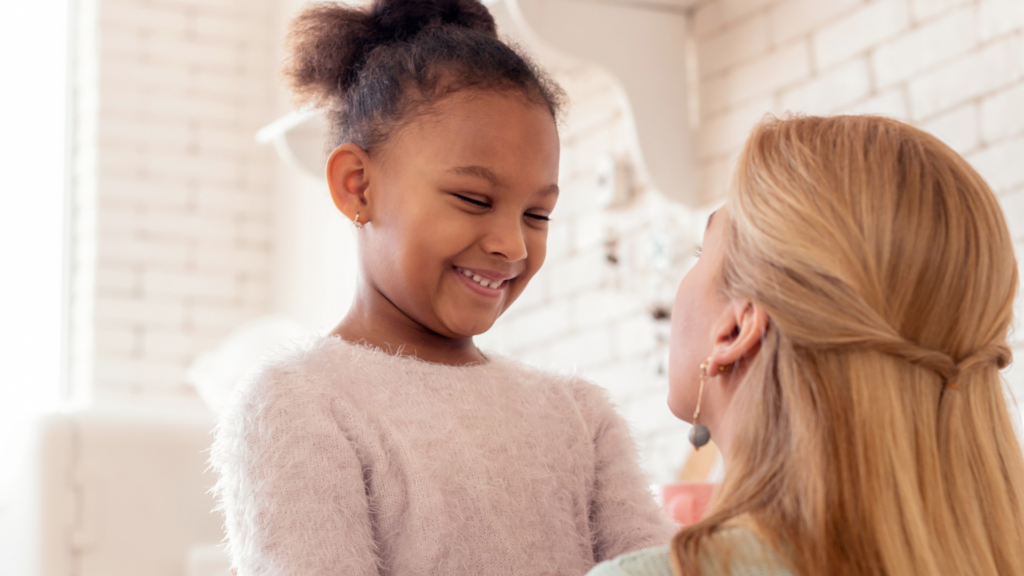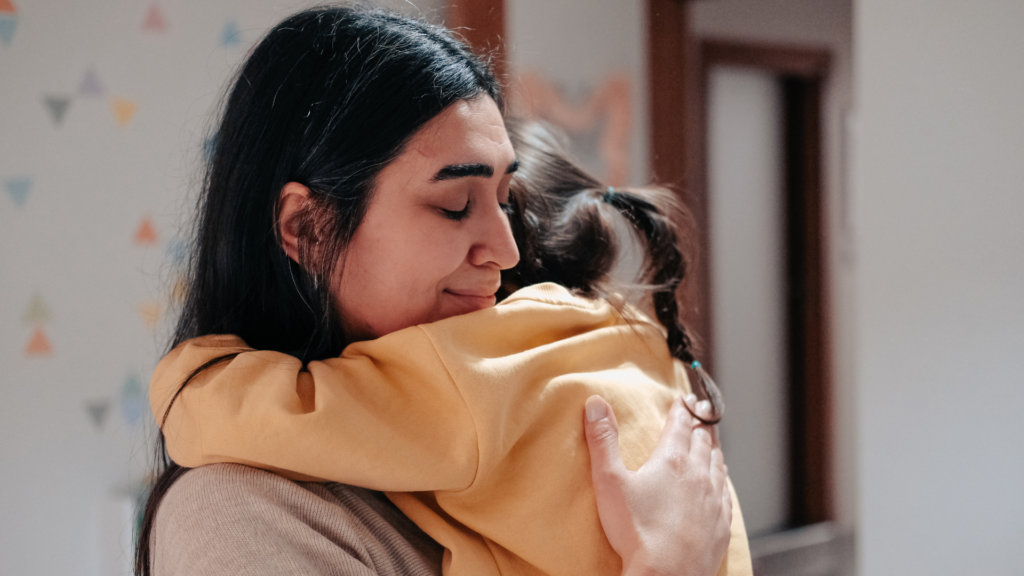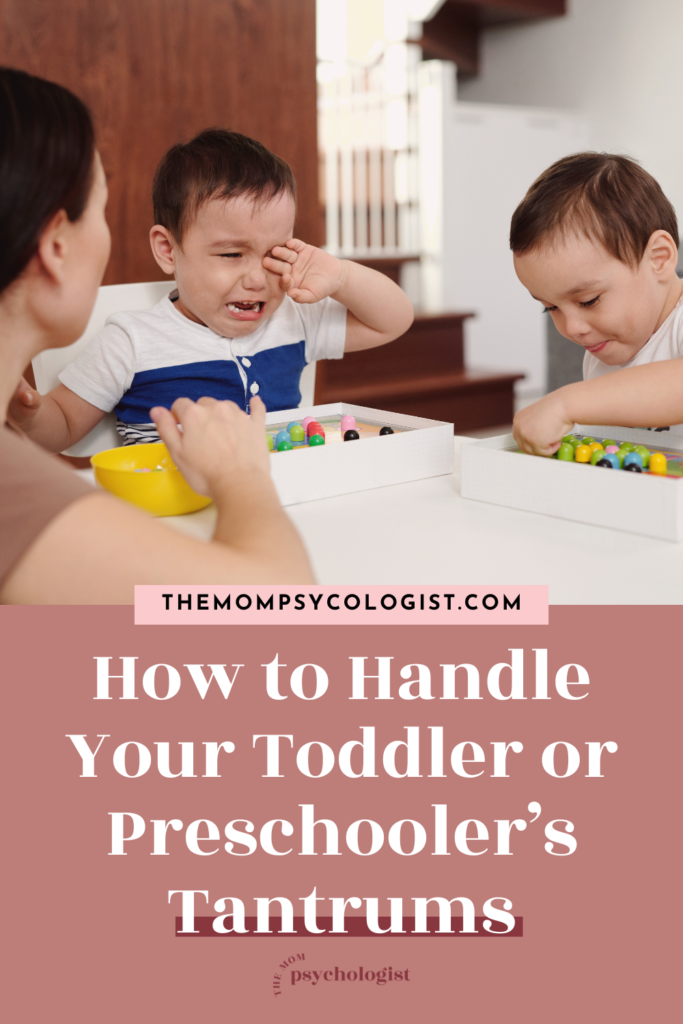watch now!
A place where I discuss all things related to toddlers and motherhood!
Subscribe to my Youtube channel
As a clinical psychologist, published author, and mother to two cheeky young children, I get it. I’ve spent YEARS researching and filtering through the noise online, so you don’t have to.
PARENTING TIPS
POTTY TRAINING
ANTIRACISM
PLAY
Blog Topics
SIBLING RIVALRY
SCREEN TIME
TANTRUMS
DISCIPLINE
Hi I'm Dr. Jazmine
How to Handle Your Toddler or Preschooler’s Tantrums: What to Say and Do
topics:
Two big questions I often receive from parents are: “Why is my toddler resistant to talking about feelings when having a tantrum?” “How do I connect with my child when they’re having these intense feelings?”
Let’s talk about how to handle your toddler or preschooler’s tantrums inside and outside the moment.

- The reason your child is resistant to talking about feelings during a tantrum is that it feels too vulnerable in that moment.
I want you to think about a time when you had intense feelings. Did you go talk to somebody immediately? Sometimes you might, but other times you probably want space and time to yourself to process and make sense of it.
Often for our kids, it’s the same idea. Talking about those feelings right away could feel really vulnerable.
When we’re having high emotions, the part of our brain called the amygdala is activated, which is our stress response system. And what’s not always activated is the part of our brain that registers language and communication so we can talk it out. Therefore, it’s often too soon to talk about those feelings – it’s too soon from a cognitive and emotional level since your toddler or preschooler is emotional and not ready to connect or process their feelings.
- We need to examine our own motives during these moments of intense feelings.
Often, when we’re dealing with these intense emotions, we’ll label those emotions and try to do some gentle or positive parenting to get them to stop crying.
What we need to ask ourselves is, “Am I labeling my child’s emotions because I want to see them and empathize, or am I labeling their emotions because I’m feeling overwhelmed and I need this to stop?”
Try not to judge yourself if this resonates, but get curious about it. Get curious about how you feel when your child is having intense emotions. Because here’s the thing: They can sense when we’re trying to control or fix their feelings.
And they will resist this because we’re trying to control their process. Your toddler or preschool knows deep in their heart this is a process only they can control, and we can’t force them to process, label, and speak calmly before they’re ready.
Of course, it does not mean that we’re not establishing boundaries for unsafe or aggressive behaviors. It means being conscious and mindful of the energy we’re bringing into these already intense emotions.
- During tantrums, it’s less about what we say and more about the energy we bring and how we approach these situations.
And a lot of that comes down to our nonverbal communication.
If you’re going blank in the moment and don’t know what to say, just breathe. Stay present in the moment and be mindful of the energy you’re bringing will help ground and guide you through how to best show up.

I will tell my daughters, “Let it out, let it out.” This is something I’m saying, but it’s a reminder for me. I’m reminding myself all feelings are okay, and I don’t need to control this process. It’s healthy that they’re letting their emotions out and expressing them with me. If I can create a safe space for my toddler or preschooler to express their emotions, it’s going to enhance our relationship and make it more likely they’re able to process what’s going on for themselves.

If our children feel like we are trying to control them, or we’re unhappy with how they’re expressing themselves, it’s going to add more stress to their plate during that moment. Now they have to deal with not only whatever set them off in the first place, but now, “Oh my gosh, my parent is disapproving of me.”
The best thing that you can do is regulate yourself during tantrums.
- Tell your child that when they’re ready they can tell you how they feel.
Sometimes you try to label your child’s emotion and they say, “No, that’s not how I feel.”
What you say is, “Okay, that’s not how you feel. Thanks for letting me know. When you’re ready, I’d love to know how you feel.”
Just saying, “How do you feel?” That’s too much pressure. Your toddler or preschooler might not be ready to process and verbalize their feelings.
So lead with “I’m here to help you. I’m right here. Let it out. And when you’re ready, I’d love to know how you feel, and we’ll get through this together.”
Just because we feel ready to talk about feelings does not mean that our child is ready. Kids are extremely candid, and that’s when you follow their cues. “You want to be left alone. I’ll give you space. Just know I’m here.”
That doesn’t mean you walk away. And often, even if our child is resisting us, it doesn’t mean they want us to leave the room. It means they need some emotional space. They need some silence, and they need to trust that we’re holding space for them.

What that means is you’re coming with the energy of “I’m here and I’m ready to talk when you’re ready. But I’m not going to leave. I’m not upset. I’m not forcing you to talk about this before you’re ready. I’m not trying to fix your feelings. I know that this is your process, and I’m going to hold space for that. I’m going to follow your lead because this is your process.”
Now, if we’re heading out the door, that doesn’t mean we don’t help them do the things they need to get done. Every situation is a little different, but it doesn’t mean we don’t draw boundaries around the situation and help in ways that you can. It means you’re not going to try to fix your toddler or preschooler’s feelings and make them feel calm before they’re ready.
- Give yourself grace and empathy because this process is hard.
It’s harder for us to give our child empathy and grace if we don’t give that to ourselves.
Please give yourself grace and empathy for the times you miss the mark, for the times you try to fix their feelings, or for the times you feel resentful of your child for throwing a tantrum in the middle of the store or at the park.
These things are hard, and we’re not always going to get them right. Give yourself lots of grace in these moments.

- Connect with your child after a tantrum or intense feelings.
If your toddler or preschooler is on the older side, they’ll have the verbal and cognitive capacity to think about these things after the moment. So connection looks like having a hard time emotionally and then circling back to that later. You can say:
- “Wow. We had a hard time at dinner. Do you remember that?”
- “I felt like we were on two separate pages, and I want to connect with you. I want to be there for you in those moments. I know how difficult these moments are for you and whatever triggered that.”
Don’t just think about connection during the tantrum, connect and circle back outside of the moment.

For little ones, it’ll more likely look like symbolic play you could use to reconnect. But connection is also the conversations we have when everybody’s calm, and we can debrief.
In the moment of a tantrum or intense feelings, connection looks like providing space. Remember, it’s not always about what we’re saying.
Of course, you want to label feelings, since that’s so powerful in raising emotionally intelligent children. Just because they can’t label their emotions in the moment, or they’re resisting, doesn’t mean they’re not learning this skill.
So whatever you’re doing at that moment, create some emotional “space.” You don’t need to fix your toddler or preschooler’s feelings at that very moment. It’s not an emergency – very few parenting situations are actual emergencies.
Give yourself permission to step back a bit, create some space, create some silence, and breathe through it so that you can follow your intuition.
The way we connect is through empathy – seeing the situation from their eyes and sympathizing with their emotions.

- Try to say yes more than no. And when you can’t say yes, give a conditional yes.
I talk extensively about this in my discipline course – Positive Discipline Academy – but let me give you a quick example: You’re in the car and your toddler asks for a bath. But you’re planning on having lunch and then nap time. Instead of saying, “No,” you can give a conditional yes: “Yes, we can take a bath after naptime.”
This is when we can meet their request and make a plan to do it once the condition is met (in this instance, nap time).
Of course, there are some things we can’t do. And then you’ll approach it from a different angle. But for those situations where there is some room – just not right now – then you can make a plan.

- Less is more during tantrums.
Less talking is more during a tantrum. Don’t focus on what you’re saying. Focus on your energy and staying grounded is going to help you and your child far more than trying to remember any tip or script.
If you need more help with tantrums and intense feelings, I have a FREE workshop, How to Get Your Kids to Listen Without Yelling, where we work through discipline and setting consequences with intention and respect. I provide you with the tools you need to create a happy home where cooperation happens without the struggle.
You’ve got this,
Dr. Jazmine
Love this? Don’t lose it!
Click below and save it to your Pinterest!

Leave a Reply Cancel reply
Copyright The Mom Psychologist® 2025
grab my free script pack!
explore
work with me
information
About
Blog
YouTube
Podcast
TMP University (Coaching)
Privacy Policy
Terms of Use
Product Disclaimer
Contact
TMP Times (Newsletter)